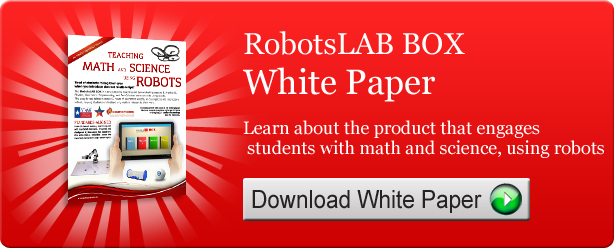
A recent yahoo story disclosed a growing chorus of parental complaints about the difficulty of the new Common Core standards for math. Having trouble with the math themselves while trying to assist their children with homework, parents complain that the standards are simply too difficult for their children. Adding, subtracting, multiplying and dividing they say is now as difficult as calculus. “Satan’s handiwork,” cries one rattled parent.
Is it really that difficult, or is this simply the way parents have always expressed their frustration when their children have come to them - -now out of school for a decade or more -- with math problems the kids couldn’t solve and the parents couldn’t begin to understand? I know I cried much the same thing when my kids brought home what was described back in the 70’s as the ‘new math.’ My kids then, like theirs now, were laboring to find math interesting.
Beginning way back then, and continuing to this very day was the need to inculcate students with what amounts to a new way of defining math literacy. As recently stated by Diane Briars, president of the National Council of Teachers of Mathematics, “Part of what we are trying to teach children is to become problem solvers and thinkers...We want students to understand what they're doing, not just get the right answer." But up till recently, the inherent difficulty in convincing students that they had a future in math made it difficult for all but the most gifted to stay with math until they reached that point.
And the advent of the digital revolution in the last few decades has made that ability to ‘understand what they’re doing’ all the more important--particularly in view of future employment prospects. Simple adding, subtracting, multiplying and dividing are easily done with a cheap calculator; as ever, the real difficulty arises when students are asked to solve ‘word problems’ that can't be solved by students without a sufficient understanding of the principles involved--an ability certainly not inculcated in most of us by math classes of the past.
But it is no longer necessary that well-intentioned math teachers watch helplessly as once eager students become frustrated, bored, and lose interest in math and then decamp for the liberal arts because math seems detached from their everyday experiences. Fortunately the same technology that has made understanding math principles much more vital for students today has also created a new digital learning environment capable of engaging students with hands-on learning as never before. And here at RobotsLAB we're convinced that our robot digital instructional tools are among the important elements in this new digital learning environment.
First, let me tell you about our own RobotsLAB BOX.
The ‘BOX’ as we call it is actually a rather handsome carrying case for a variety of robot teaching-aids that demonstrate core math and science principles. Students can watch a quadcopter teach quadratic equations, a rover demonstrate angular and linear equation concepts, and a robotic arm will show them what the word cosine really means, all displayed on the accompanying tablet. The lesson plans are strictly aligned with mandated Common Core, TEKS, and STAAR standards for Middle and High School.As a measure of its innovative excellence, in the past year the BOX has won several coveted edtech awards: the Gold Edison Award, Best STEM Solution by EdTech Digest, and the Launchedu competition at SXSWEDU.
Second, there is NAO, the amazing anthropomorphic robot manufactured by French company Aldebaran. From the classroom to outer space, NAO is the most widely used robot in the fields of education and research. Besides demonstrating an uncanny ability to interact with autistic children, NAO has helped kids in elementary, middle-school and high school learn to code and program. It is found in many universities’ robotics classes: Tokyo University recently purchased 30 with the intention of programming them as laboratory assistants. And while NAO hasn’t reached space yet, it will be the only robot in an analog astronaut crew in the Mars Society’s Mars Desert Research Station in the Utah high desert.
Our third product, the STEM-BOT 3D Class is all about engaging students in the exciting new field of 3D printing, the revolutionary new manufacturing process that President Obama considers “the new industrial revolution in manufacturing.” Students using this modular program learn about digital design and manufacturing while producing a complex robot that they will eventually program using the drop-down programing language, Scratch. Hands-on learning doesn’t get any more engaging than this! And teachers needn’t worry about learning a new skill set; the lesson plans are designed with beginners in mind -- as is our fourth product, CUBLETS.
CUBLETS are small magnetic blocks that snap together to form a variety of programmable robots. They come in many configurations such as sensors, motors, and flashlights. They were created with younger students in mind -- the accompanying digital curriculum will help develop kids’ understanding of cause and effect, procedural thinking and problem solving.
MATHBALL, our last and most recent product was originally designed for basketball players who wanted to improve their net accuracy in a systematic manner. It looks like a basketball -- it actually is a basketball --but one that is filled with sensors that describe its motion in terms of math equations and transmit them to the included tablet so that students can learn to view and describe the world with math in mind. The included lesson plans are designed to assist teachers explain and illustrate math concepts from Algebra through Pre Calculus.
The new common core standards are probably here to stay and railing against them is understandable, but a waste of time. A more productive use of parental energy would be ensuring that their childrens’ classrooms are up to date; that is to say, equipped in such a way as to engage the students, not bore them to tears. This is more easily done than ever before -- an Aristotle for a teacher is no longer necessary; there are a long list of digital teaching aids that can take math off the black board and into the students hands and minds. RobotsLAB’s robots are among that number.

